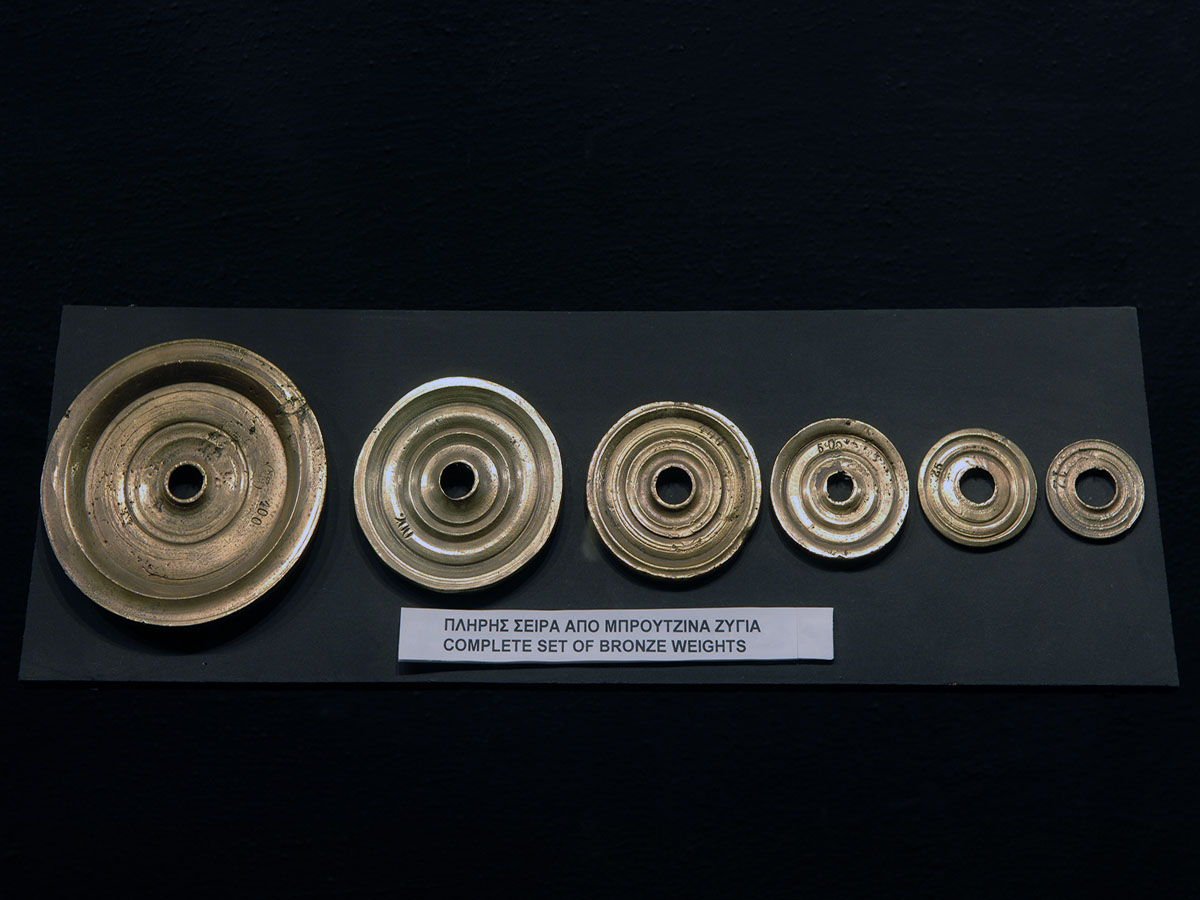Exhibition
Presentation Of Exhibits By Section
Metalwork
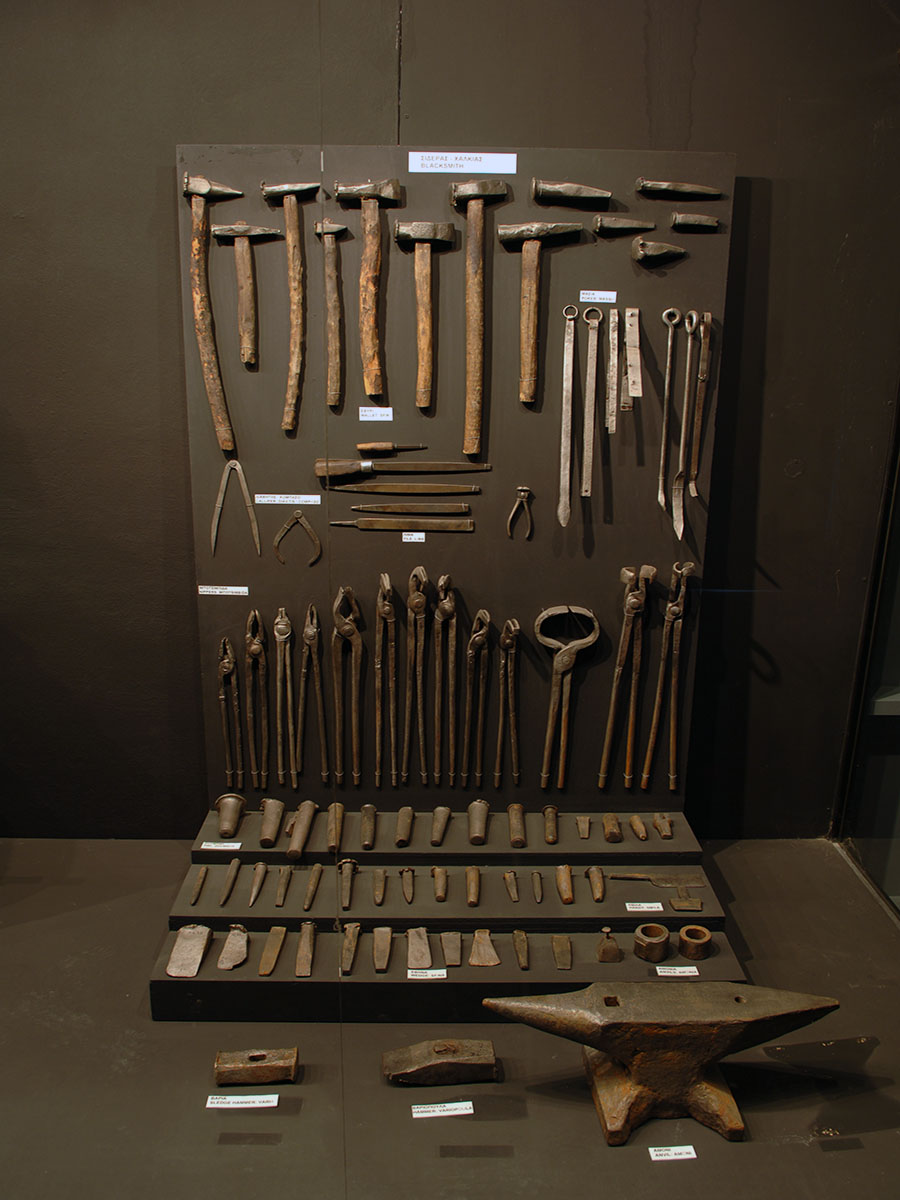
The smith
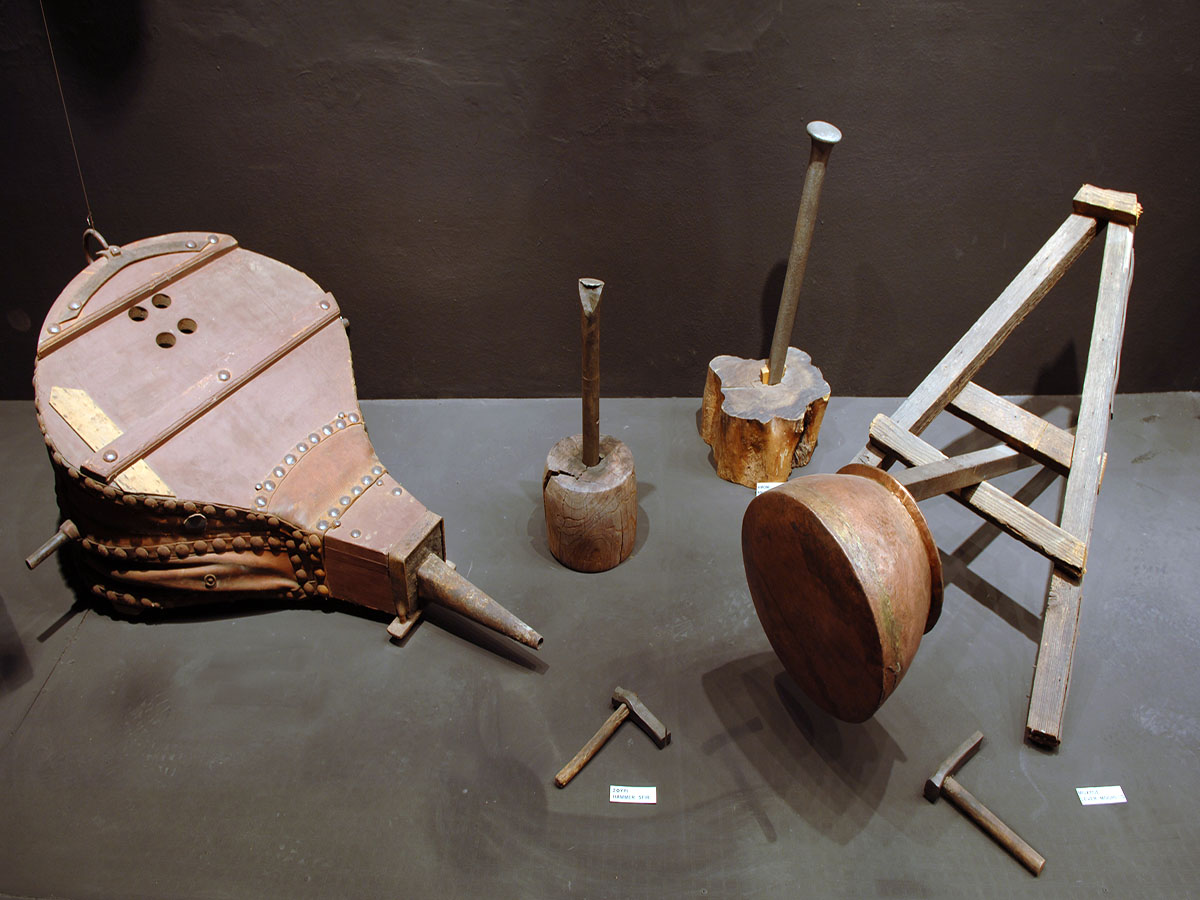
The coppersmith
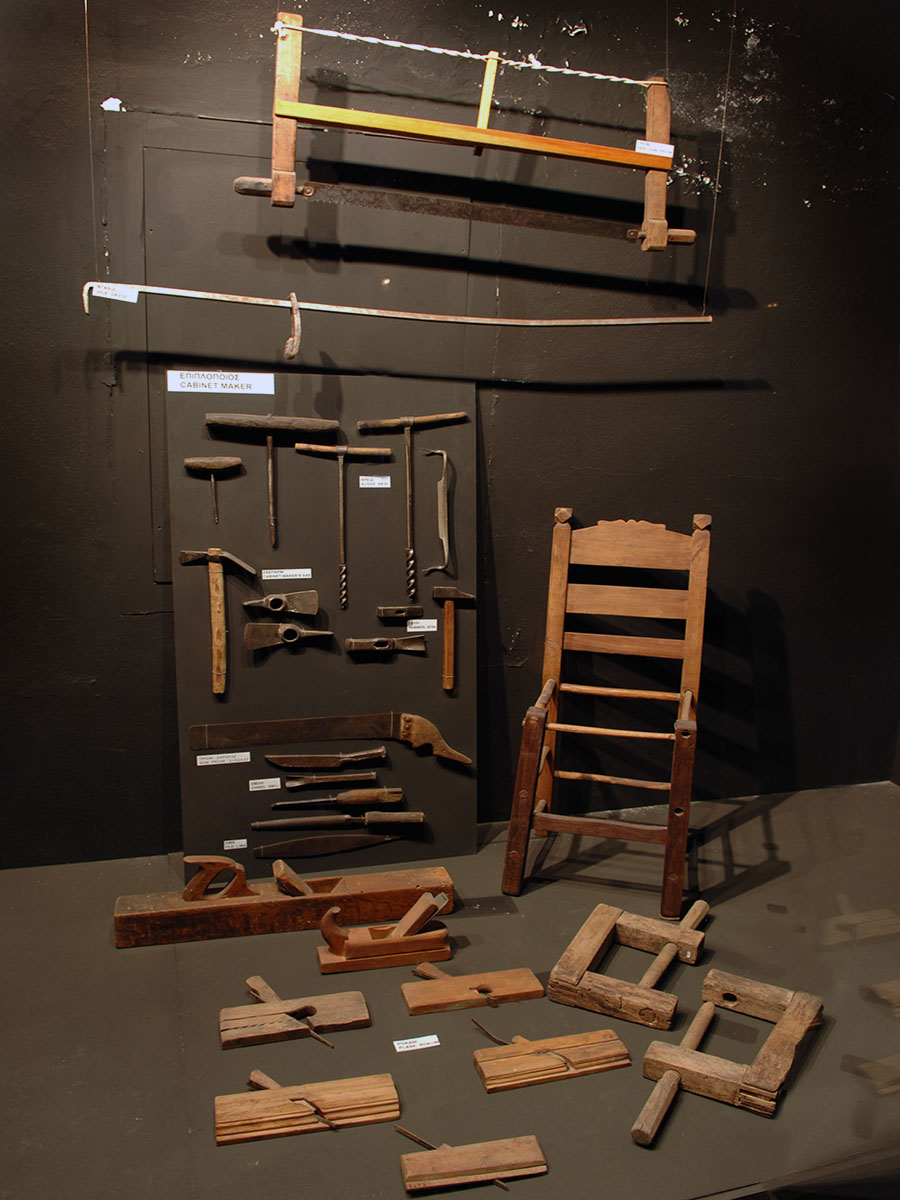
The Carpenter
The cobbler
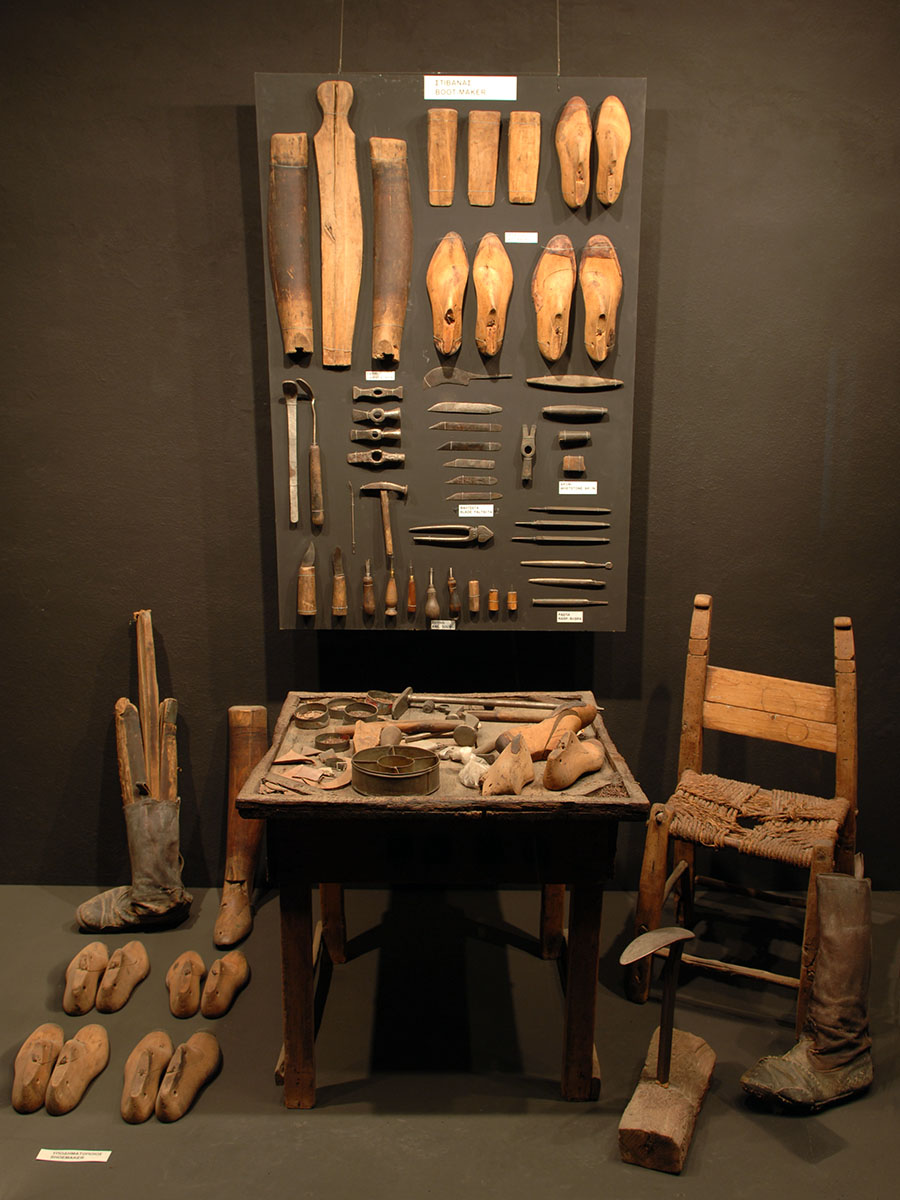
The saddler
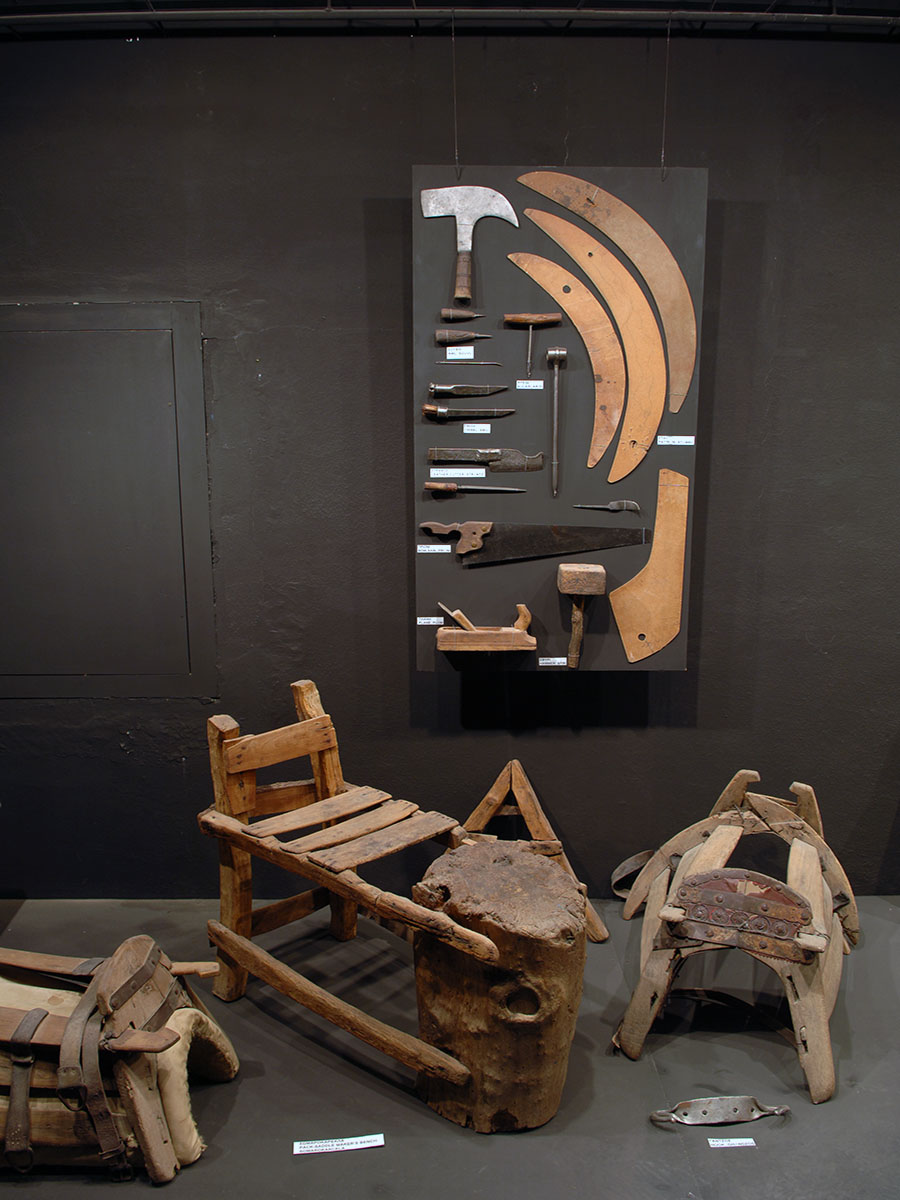
The Tack Maker
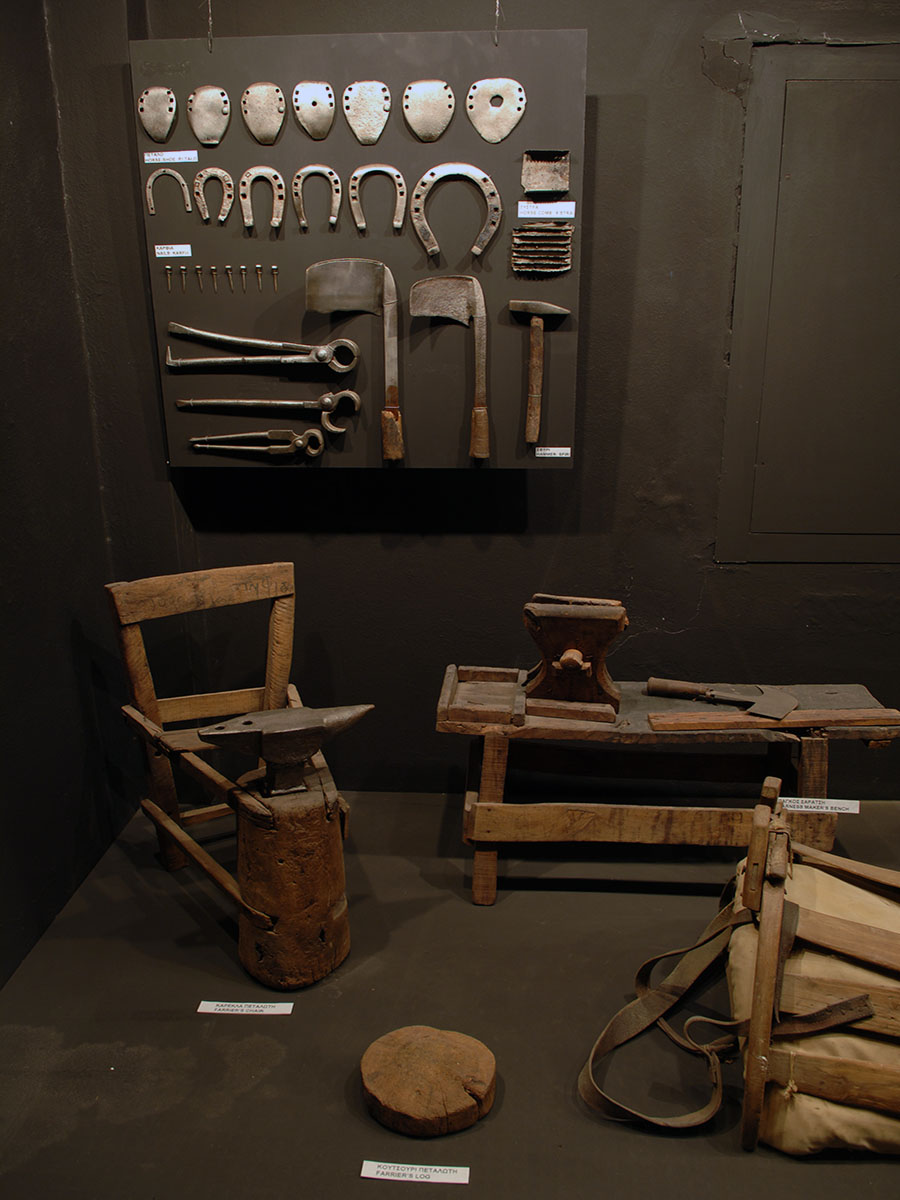
The farrier
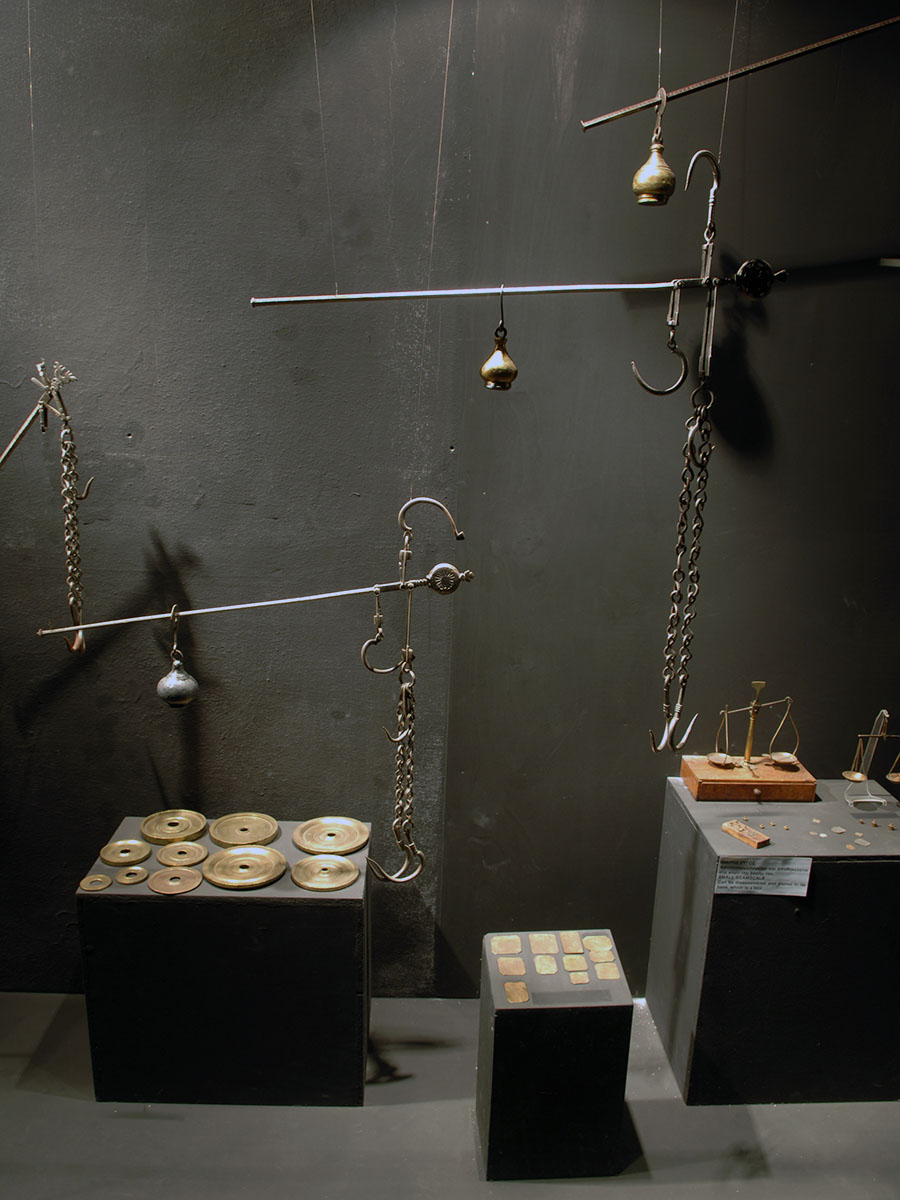
TRADE
During the long occupation of Crete, trade in rural areas was almost nonexistent and barter was used, even for buying sheep and goats or beasts of burden. Only the Venetians and, later, the Turks were allowed to engage in commerce, being established near the ports of the towns of northern Crete. The intermediaries were Jews and Armenians living in the towns. From the 15th century onwards, the main products of the countryside were “malvicino” wine (malmsey) and olive oil. The farmers brought their goods to sell outside the city every morning.
Very little currency circulated in the countryside, so Venetian and Turkish coins are rarely found in archaeological digs. Of course there were various scales, volumetric vessels and measures, but the basic currency was oil and grain.
